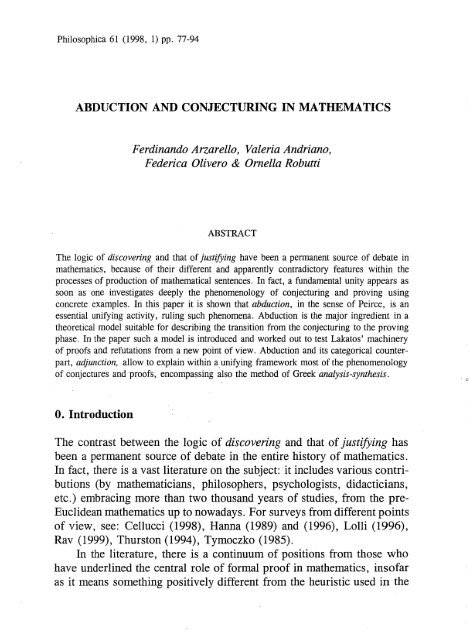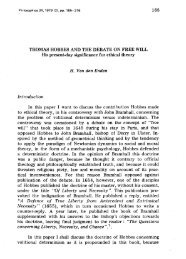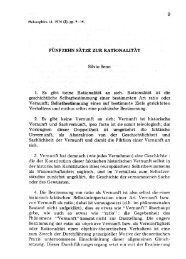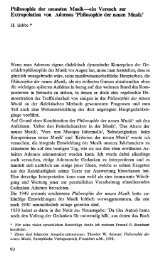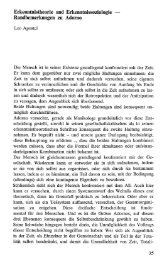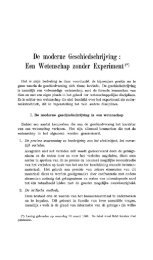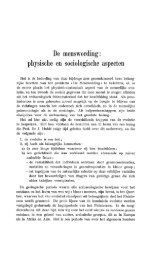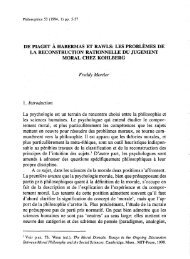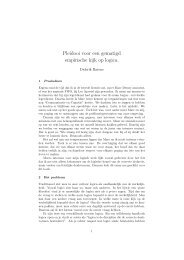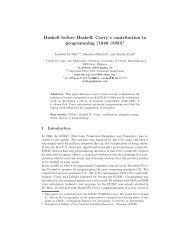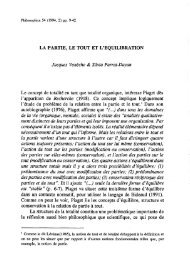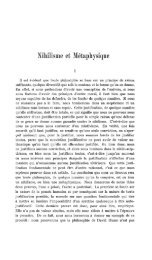Ferdinando Arzarello, Valeria Andriano, Federica Olivero & Ornella ...
Ferdinando Arzarello, Valeria Andriano, Federica Olivero & Ornella ...
Ferdinando Arzarello, Valeria Andriano, Federica Olivero & Ornella ...
Create successful ePaper yourself
Turn your PDF publications into a flip-book with our unique Google optimized e-Paper software.
Philosophica 61 (1998, 1) pp. 77-94<br />
ABDUCTION AND CONJECTURING IN MATHEMATICS<br />
<strong>Ferdinando</strong> <strong>Arzarello</strong>, <strong>Valeria</strong> <strong>Andriano</strong>,<br />
<strong>Federica</strong> <strong>Olivero</strong> & <strong>Ornella</strong> Robutti<br />
ABSTRACT<br />
The logic of discovering and that of justifying have been a permanent source of debate in<br />
mathematics, because of their different and apparently contradictory features within the<br />
processes of production of mathematical sentences. In fact, a fundamental unity appears as<br />
soon as one investigates deeply the phenomenology of conjecturing and proving using<br />
concrete examples. In this paper it is shown that abduction, in the sense of Peirce, is an<br />
essential unifying activity, ruling such phenomena. Abduction is the major ingredient in a<br />
theoretical model suitable for describing the transition from the conjecturing to the proving<br />
phase. In the paper such a model is introduced and worked out to test Lakatos' machinery<br />
of proofs and refutations from a new point of view. Abduction and its categorical counterpart,<br />
adjunction, allow to explain within a. unifying framework most of the phenomenology<br />
of conjectures and proofs, encompassing also the method of Greek analysis-synthesis.<br />
o. Introduction<br />
The contrast between the logic of discovering and that of justifying has<br />
been a permanent source of debate in the entire history of mathematics.<br />
In fact, there is a vast literature on the subject: it includes various contributions<br />
(by mathematicians, philosophers, psychologists, didacticians,<br />
etc.) embracing more than two thousand years of studies, from the pre<br />
Euclidean mathematics up to nowadays. For surveys from different points<br />
of view, see: Cellucci (1998), Hanna (1989) and (1996), Lolli (1996),<br />
Rav (1999), Thurston (1994), Tymoczko (1985).<br />
In the literature, there is a continuum of positions from those who<br />
have underlined the central role of formal proof in mathematics, insofar<br />
as it means something positively different from the heuristic used in the<br />
. ""
78 F. ARZARELLO, V. ANDRIANO, F. OLIVERO, O. ROBUTTI<br />
process of research, to those who have stressed the latter more, denying<br />
the value of the former in some cases. Moreover, many papers, written<br />
by people of different cultural areas in different times (from Pappus or<br />
Plato to Poincare, Polya or Lakatos, through Descartes or Arnaud and<br />
Nicole), underline that in solving a problem, in conjecturing a hypothesis,<br />
in proving (or disproving) a result, a crucial point consists in the dialectic<br />
between an explorative, groping phase and an organising strategy which<br />
converges towards some piece of validated knowledge.<br />
In this paper we show that abduction, in the sense described in<br />
Peirce's Logic (Peirce (1960), Vo1.II, Book III, Chap.5, pp.372-388)<br />
plays an essential role in this dialectic: abduction reveals to be an essential<br />
resolutive move, after which the conjectures are formulated and<br />
allows the transition to the proving modality, which remains in any case<br />
deeply intertwined with it. This is partially in conformity with Peirce's<br />
claim that of the three logic operations, namely deduction, induction,<br />
abduction (or hypothesis), the last is the only one which introduces any<br />
new -idea (Peirce (1960), 5.171).<br />
Our thesis is based on a theorethical analysis and empirical observations<br />
made on subjects who solve problems in order to conjecture and<br />
to prove theorems. It has been elaborated analysing data collected: (i)<br />
from about 60 (high school and college) students, involved in a teaching<br />
experiment of elementary geometry since three years (within different<br />
environments: paper and pencil, computers); (ii) from the performances<br />
of experts (mathematics teachers in high ·schools and at the University),<br />
who solve elementary but not trivial problems and have accepted to speak<br />
aloud, while solving the problems; (iii) from the (rare) papers of professional<br />
mathematicians who have written about their processes of thought,<br />
while discovering new results.<br />
The paper is divided into three chapters. In the first, some major<br />
features of the epistemological debate concerning the dialectic discovering<br />
Vs/ justifying is summarised; in particular the topic analysis Vs/ synthesis.<br />
No originality is in this part, whose aim is to put forward the framework<br />
within which our researches are embedded. In the second chapter, we<br />
sketch our research on the role of abduction in mathematics; namely, we<br />
show that abduction is a resolutive move in the dialectic conjecturing/proving.<br />
In fact, it is crucial in producing conjectures; we will sketch a<br />
theoretical model suitable for describing the transition from the conjecturing<br />
to the proving phase: the model does not only fit with empirical
ABDUCTION AND CONJECTURING IN MATHEMATICS 79<br />
data of our protocols, but will be used to give a fresh analysis of the well<br />
known example by Lakatos (1976), concerning the Euler conjecture on<br />
the edges, faces and vertices of a polyhedron. In the third chapter, the<br />
theoretical model is attacked from the point of view of categorical logic.<br />
In fact, the way abduction' is used in our model hides an interesting<br />
phenomenon, namely the so called adjunction, which can be revealed<br />
using such logical tools. Abduction and adjunction are deeply connected;<br />
hence it seems to us that the above dichotomies (logic of discovery V sf<br />
the logic of justifying, conjecturing Vsf proving etc.) are like the two<br />
sides of the same coin and that underpinning their contra position may be<br />
an ill way of posing problems. What we find is a common root, which<br />
has both cognitive and logical features, namely abduction and adjunction;<br />
the above contra position appears only if one remains at the surface of<br />
phenomena. Our result is still stronger, since analogous conclusions can<br />
be found also investigating the Greek' analysis and synthesis with logical<br />
tools, as will be outlined at the end of the paper.<br />
1. The historical & epistemological framework of the dialectic conjecturing-proving.<br />
The creative and intuitive aspects of mathematicians' activity vs. the most<br />
rigorous ones have been scrutinised with different tools and ideas in the<br />
course of centuries, particularly concentrating on the relationships between<br />
logic(s) and mathematics conceived both as a product and as a<br />
process. In this order of ideas, roughly speaking, we can see different<br />
streams of thought (see Feferman, 1978, and Cellucci, 1998):<br />
a. Many scholars have distinguished between a scientific logic and a<br />
natural logic: Descartes, Frege, Peirce, Dedekind.<br />
b. Some have argued in favour of a scientific and formal logic which<br />
. captures the essence of mathematics, namely its justificative aspects as<br />
well as its creative features: Aristotle (partially), Leibniz, Hilbert,<br />
Gentzen, Hintikka;<br />
c. Some have seen the formal logic only as a justificative tool, claiming<br />
that intuitive and creative aspects of mathematicians' work elude a logical<br />
scaffolding and generally leave them to psychology: Frege, Feferman;<br />
d. Some have tried to investigate the natural logic, possibly as a distinct<br />
'discipline' from formal logic; they have investigated both the origin of
ABDUCTION AND CONJECTURiNG IN MATHEMATICS 81<br />
phy to rhetoric" (Ibid.). To ascend to the top of human knowledge people<br />
need a new logic (Regula II). The new logic has roots different from<br />
Aristotle and Euclid; in fact it goes back to Pappus and Diophantus<br />
(Regula IV), namely to the so called analytic method.<br />
The same roots, namely the analytic method of Pappus, are invoked<br />
by many people who are put under our item d. For ex., the last chapter<br />
of Lakatos Dissertation at Cambridge (1956-1961) is devoted to the<br />
method of analysis-synthesis, as well as an address at a Conference in<br />
Finland (1973), in reply to a paper of Hintikka on the subject (all together,<br />
they constitute chapter 5 of Lakatos, 1978). Lakatos uses Pappus'<br />
and Proclos' definition of analysis to describe the process of discovering<br />
in mathematics, in particular that of criticising proofs and improving<br />
conjectures (Lakatos (1976), p. 9 and 75). The method, that Lakatos calls<br />
of thought-experiment or quasi-experiment from Szab6 (1958), consists<br />
in decomposing "the original conjecture into sub conjectures or lemmas,<br />
thus embedding it in a possible quite distant body of knowledge" (ibid.).<br />
Polya in Polya (1990) and (1954) rephrases .Pappus' method (he was<br />
called a second Pappus by Hintikka and Remes). Instead of a method<br />
upon which to build criticism to the way mathematical truths are presented<br />
in books after Euclid, namely with "finality-certainty requirements<br />
(which) survive in mathematics until today as the requirement of necessary<br />
and sufficient condItions" (from Lakatos (1978), p. 75), for Polya<br />
analysis is an auxiliary method, which helps in building up the rigorous<br />
proof: it helps in generating "a better understanding of the mental operations<br />
which typically are useful to solve problems" (ibid.), and as such<br />
it is studied as a useful pedagogical tool.<br />
The most widely known formulation of the so-called method of<br />
analysis-synthesis, at least in mathematics, is the introduction to the Book<br />
7 of the Collection by Pappus of Alexandria (Pappus, 1986). According<br />
to Pappus, "analysis is the path from what one is seeking, as if it 'were<br />
established, by way of its consequences (CiKOAov8wv), to something that<br />
is established by synthesis. That is to say, in analysis we assume what is<br />
sought as if it has been achieved, and look for the thing from which it<br />
follows, and again what comes before that, until we get to something that<br />
is already known, or that occupies the rank of first principle. ( ... ) In<br />
synthesis, by reversal, we assume what was obtained last in the analysis<br />
to have been achieved already, and, setting now in natural order, as<br />
precedents, what before were following, and fitting them to each other,
82 F. ARZARELLO, V. ANDRIANO, F. OLIVERO, O. ROBUTTI<br />
we attain the end of the construction of what was sought. "(ibid.) This text<br />
poses several problems of interpretation, concerning the direction of<br />
analysis-synthesis, as it is well known (for a wider discussion see Pappus,<br />
1986). The second part of the passage seems to exclude that analysis is<br />
a downstream process (drawing logical conclusion from the desired<br />
theorem). On the other hand, if analysis is an upstream process (looking<br />
for the premises from which the conclusions can be drawn), then the<br />
synthesis is not the reverse of analysis, and it is useless. The problem is<br />
how can these two different concepts coexist in Pappus. The current<br />
interpretation is that they could coexist if we assumed that Pappus thought<br />
that all steps of deduction are convertible, that is the normal situation in<br />
geometry. By means of analysis we come to something already known.<br />
Then what is sought will be known if,. through the synthesis, we test the<br />
reversibility of each step.<br />
Hintikka and Remes propose another interpretation of the text, based<br />
on a different translation of the term aKoAov801l. They suggest that "70<br />
aKoAov8ov ... does not mean a logical consequence, but is a much more<br />
vague term for whatever 'corresponds to', or better, 'goes together<br />
with'" (Hintikka & Remes, 1974». Hence they translate 'concomitant'<br />
instead of 'consequence'. Outlining the central role of auxiliary constructions<br />
in Greek geometry, they say that "the very purpose of analysis is<br />
to find the desired construction which is executed in the synthesis ( ... ) If<br />
analysis is a series of steps which start from those parts of the figure<br />
which illustrate the desired theorem, and which establish connections<br />
between these and certain pre-existing entities, we of course do not obtain<br />
a synthesis in the sense of construction by simply reversing the order of<br />
these steps" (ibid.). The distinction between analysis and synthesis is then<br />
no longer a difference in direction. Also Descartes' methodological<br />
description of his algebraic method of analysis seems to agree with this<br />
interpretation. Instead of seeking a deductive connection between what is<br />
done and what is sought, he suggests to look for the dependencies between<br />
known and unknown quantities.<br />
In this interpretation, called configurational in contrast with the<br />
directional one, the two ways, analysis and synthesis, could be really<br />
different and would represent two dual approaches to mathematical truths,<br />
the one complementary to the other. It is interesting to observe that these<br />
two ways have been interpreted by Scandinavian scholars (Hintikka,<br />
Remes, Maenpaa) within the machinery of Natural deduction (as for-
ABDUCTION AND CONJECTURING IN MATHEMATICS 83<br />
mulated by Genzen, Prawitz, Martin-Lot) in a very suggestive way,<br />
which will result one of the major ingredients in our investigation.<br />
2. Abduction<br />
We shall show that abduction is a resolutive move in the dialectic conjecturing'-proving.<br />
First, we will discuss how it enters into the theoretical<br />
framework of chapter 1; then we will give a model (based upon our<br />
empirical observations) which describes the way conjectures are produced<br />
by experts and how they manage the transition from the conjecturing to<br />
the proving phase. Afterwards we will use it to give a fresh and detailed<br />
analysis of Lakatos model of proofs and refutations.<br />
The main points which emerge from'the discussion in chapter 1 are:<br />
1. There are two complementary ways of producing mathematical sentences<br />
and theorems, e.g. the logic of discovering or that of justifying,<br />
analysis or synthesis.<br />
2. The two aspects seem to be always present in the activity of the working<br />
mathematicians and can be distinguished only for the benefit of a<br />
theoretical analysis. Hence mathematic's as a human product must be<br />
explained not only taking both of them into account, but a model is<br />
needed where the two are integrated within a framework of continuity and<br />
complementarity, both from an epistemological and from a cognitive .<br />
point of view.<br />
3. Instead of a directional analysis of the process of research, it is more<br />
suitable to look at processes of conjecturing-proving within a configurational<br />
framework.<br />
4. As a consequence, it is crucial the analysis of the interactions between<br />
the two above opposite streams. It is necessary to give a theoretical<br />
reason why such apparently contradictory approaches can live together in<br />
the reallif of mathematicians. A fresh analysis is needed, insofar as a lot<br />
of existing research seems to underline more the contradictions and the<br />
disconnections between the two: see for some different examples<br />
Tymoczko (1985), Davis & Hersh (1981) or Cellucci (1998).<br />
We shall elaborate point 4 above, by describing a model which<br />
exhibits a fine dynamic structure of the two streams within a framework,<br />
which stresses more the continuity and the configurational aspects. This<br />
model has an experimental basis, but has been elaborated also through a
84 F. ARZARELLO, V. ANDRIANO, F. OLIVERO, O. ROBUTTI<br />
theoretical analysis of problems under items 1,2,3 above. The interested<br />
reader can find more details in <strong>Arzarello</strong> et al. (1998a) and (1998b).<br />
We shall expose the major features, shown by experts while solving<br />
elementary (but not routine) geometrical problems. Typically, a geometrical<br />
situation to explore is given, with some very open question to answer<br />
(e.g.: under which hypothesis, such and such a property concerning the<br />
drawn figure does hold? make some conjecture and prove it).<br />
The subjects show successively two main modalities of acting, namely:<br />
exploring/selecting a conjecture and concatenating sentences logically.<br />
In fact, any process of exploration-conjecturing-proving is featured by a<br />
complex switching from the one modality to the other and back, which<br />
requires a high flexibility in tuning oneself to the right one.<br />
Our aim is to analyse carefully how the transition from the one<br />
modality to the other happens. What a. typical (clever) solver does, can<br />
be sketched as follows.<br />
Phase 1<br />
An exploring modality starts, with the use of some heuristic to guess<br />
what happens working on some particular examples, hence selecting a<br />
conjecture. The conjecture in reality is a working hypothesis to be<br />
checked: generally its form is far from a conditional statement and to<br />
confirm it new explorations are made by using some heuristic. Slowly,<br />
the solver detaches from the exploration process; generally, the situation<br />
is described by the subject in a language which has a logical flavour, but<br />
perhaps it is not phrased in a conditional form (if ... then) nor it is crystallised<br />
in a logical form; on the contrary, the subject expresses his hypothesis<br />
not yet as a deductive sentence, but as an abduction, namely a sort of<br />
reverse deduction. In fact, generally the subject sees what rule it is the<br />
case oj, to use J>eirce language. Namely, she/he selects the piece of<br />
her/his knowledge she/he believes to be right; the conditional form is<br />
virtually present: its ingredients are all alive, but their relationships are<br />
still reversed, with respect to the conditional form; the direction after<br />
which the subject sees the things is still in the stream of the exploration:<br />
the control of the meaning is ascending (we use this term as in Saada<br />
Robert, 1989, and Gallo, 1994).<br />
Phase 2<br />
A switching to the deductive form happens, because of the abduction.<br />
Now the control is descending and we have an exploration of the situation,<br />
where things are looked at in the opposite way: not in order to have
ABDUCTION AND CONJECTURING IN MATHEMATICS 85<br />
hints for getting a conjecture, but in order to see in them why the regularity<br />
got with the abduction does work. The reversed way of looking at<br />
figures leads the subject to formulate the conjecture in the conditional<br />
form. Now the modality is typically that of a logical concatenation.<br />
Phase 3<br />
Now suitable, possibly fresh, heuristic is used, in order to prove the<br />
conjecture. Here the descending control is crucial: it allows the detached<br />
subject to interpret in the 'right' way what is happening, namely to<br />
produce logical concatenations. First they have a local character, then<br />
they are organised in a more global and articulated way. Here the detachment<br />
has increased: the subject has become a true rational agent (see<br />
Balacheff, 1982), who controls the products of the whole exploring and<br />
conjecturing process from a higher level, selects from this point of view<br />
those statements which are meaningful for the very process of proving<br />
and rules possible new explorations. In this last phase, conjectures are<br />
possibly reformulated in order to combine better logical concatenations<br />
and new explorations are possibly made to test them.<br />
We observe that the exploration and selection modality is a constant<br />
in the whole conjecturing and proving processes; what changes is the<br />
different attitude of the subject towards her/his explorations and the<br />
consequent type of control with respect to what is happening in the given<br />
setting. It is the different control. to change the relationships among the<br />
geometrical objects, both in the way they are 'drawn' and in the way they<br />
are 'seen'. This is essential for ·producing meaningful arguments and<br />
proofs. Also detachment changes with respect to control: there are two<br />
types of detachment. The first one is very local and marks the switching<br />
from ascending to descending control through the production of conjectures<br />
formulated as conditional statements· (that is local logical concatenations)<br />
because of some abduction. The second one is more global and we<br />
used the metaphor of the rational agent to describe it: in fact it is embedded<br />
in a fully descending control, produces new (local) explorations<br />
and possibly proofs (that is global logical combinations). The transition<br />
from the ascending to the descending control is promoted by abduction,<br />
which puts on the table all the ingredients of the conditional statements:<br />
it is the detachment of the subject to reverse the stream of thought from<br />
the abductive to the deductive (i.e. conditional) form, but this can happen<br />
because an abduction has been produced. The consequences of this transition<br />
are a deductive modality and the new relationships among the
86 F. ARZARELLO, V. ANDRIANO, F. OLIVERO, O. ROBUTTI
88 F. ARZARELLO', V. ANDRIANO, F. OLIVERO, O. ROBUTTI<br />
it, can be pictured in the following way:<br />
(i) At the beginning, there is a conjecture, namely some sentence E which<br />
holds possibly within a context P:<br />
P I- E;<br />
(ii) Because of some thought experiment, a surpnsmg or interesting<br />
situation appears, namely a counterexample c, which has a global character<br />
( see above):<br />
Hence the problematic situation now consists in explaining the reason of<br />
the counterexample, that is of which rule this counterexample is the case<br />
within the given context; hence by a new abduction, we get such a reason,<br />
let us say· p-<br />
P I- P-(c);<br />
(iii) Now, a new resolutive move starts, typical of what we have called<br />
the logic of not. The new move consists in investigating the connections<br />
between the cause of the counterexample, namely P-, and the conjecture<br />
PI-E. In fact, P- is possibly a reason why the conjecture does not<br />
hold; hence it is reasonable to look within the context P for some new<br />
hypothesis, let us say P+, which eliminates P- and consequently, the<br />
counterexample. Lakatos' paper describes how the subject can find such<br />
a P+, within the context P, through a dynamic exploration: namely how<br />
P+ is produced with a new abduction, of the type described in the preceding<br />
example:<br />
Generally, with the new hypothesis P+, one has all the ingredients<br />
for producing a proof of the conjecture E, within the enriched theory<br />
P&P+:<br />
P & P+ I- E.
ABDUCTION AND CONJECTURING IN MATHEMATICS 91<br />
which is mirrored at a cognitive level by what we have called ascending<br />
control, has been emphasised also by Lakatos: "Whether a deductive<br />
system is Euclidean or quasi-empirical is decided by the pattern of truth<br />
value flow in the system. The system is Euclidean if the characteristic<br />
flow is the transmission of truth from the set of axioms 'downwards' to<br />
the rest of the system -logic here is an organon of proof; it is quasiempirical<br />
if the characteristic flow is retransmission of falsity from the<br />
false basic statements 'upwards' towards the "'hypothesis' -logic here is<br />
an organon of criticism." (Lakatos, 1978, p. 29).<br />
Backwards direction and the logic of not, typical of finding solutions<br />
to the cp( ) in [3], correspond to what Lakatos calls retransmission of<br />
falsity; it is however questionable that their nature implies quasi-empiricism<br />
in mathematics.<br />
On the contrary, the relationships between abduction and adjunction<br />
which exist behind the solution processes to equations [3] are similar to<br />
the relationships between informal and formal proofs. The distinction has<br />
been made by many scholars (see Kreisel, 1970, pp. 445-467): the former<br />
are those "of customary mathematical discourse, having an irreducible<br />
semantic content" (Rav, 1999, p. 11) and the latter are syntactic 0 bj ects<br />
of a formal system. In fact, abduction and backwards strategies seem to<br />
exhibit essentially two typologies (corresponding to [1] and [2], respectiv"ely),<br />
whose psychological and epistemological features, essentially<br />
embodied in abduction, have been described in chapter 2. The formalisation<br />
within the systems of Natural Deduction and the categorical interpretation<br />
given in chapter 3, essentially based upon adjunction, seem to<br />
represent the formal counterpart of such processes. Of course it is questionable<br />
that adjunction incorporates everything, as well as it is perhaps<br />
debatable that every informal proof has a formal counterpart (as the so<br />
called Hilbert's Thesis says, see Rav, 1999, P .11); something similar<br />
happens when one compare the intuitive notion of effectively computable<br />
function with the technical definition of partial recursive function<br />
(Church's Thesis says that the technical definition captures all of the<br />
intuitive concept). We do not suggest here to invent a new Thesis, to<br />
support the adequacy between the two notions; what we underline is that<br />
like in the previous two examples (computable functions, proofs), the<br />
existence of an intuitive notion has deepened its analysis through mathematical<br />
investigations without claiming a new epistemology, in the same<br />
manner many things made by people who make conjectures and proofs
92 F. ARZARELLO, V. ANDRIANO, F. OLIVERO, O. ROBUTTI<br />
can be explained using suitable mathematical (and traditional) tools of<br />
analysis.<br />
We wish to conclude the paper with two more observations. First,<br />
the works of Hintikka and Remes (1974) and Maenpaa (1997) have used<br />
deductive logic to interpret the configurational aspects of analysis; they<br />
used essentially the systems of Natural Deduction with (in the last papers)<br />
the machinery of types of Martin-Lof, see Maenpaa (1997), that is in the<br />
version which shows more connections" with computer science. They<br />
showed that "the Greek method of geometrical analysis can be generalised<br />
into a method of solving all kinds of mathematical problems in type<br />
theory by taking into account inductively defined problems, which are<br />
characteristic of programming. The method known as top-down programming<br />
turns out to be a special case of analysis." (Maenpaa, 1997, p.226).<br />
It is intriguing (and corroborating the ideas above) that we find also from<br />
another approach a reduction to the same formal machinery!<br />
Second -as a further corroboration- the same strategy (of looking for<br />
suitable economic hypothesis in a backward approach) that we have<br />
analysed above is at the basis of many programs for automatic theorem<br />
proving in elementary geometry, e.g-., those which use the Grobner<br />
Buchberger algorithm, see Chou (1988): the algebraic varieties, which<br />
are the geometric counterpart of the algebraic symbolism incorporated<br />
into the software, are the natural model of a dynamic logic, where the<br />
method of resolution means looking for a new" economic hypothesis,<br />
which allows to restrict the domain of validity of a supposed conjecture,<br />
in order that this really becomes true, see Cox et al. (1992), pp.280-296.<br />
The strategy is very similar to that illustrated in problem [2], modulo the<br />
algebraic translation.<br />
REFERENCES<br />
Universita di Torino<br />
<strong>Arzarello</strong> F., Michelletti C., <strong>Olivero</strong> F., Paola D. and Robutti O. (1998a),<br />
A model for analysing the transition to formal"proofs in geometry. In:<br />
A. Olivier and K. Newstead (eds.), Proveedings of PME22. Stell enbosch,<br />
vol. 2, 24-31.<br />
<strong>Arzarello</strong> F., Gallino G., Michelletti C., <strong>Olivero</strong> F., Paola D. and Robutti<br />
O. (1998b). Dragging in Cabri and modalities of transition form con-
ABDUCTION AND CONJECTURING IN MATHEMATICS<br />
jectures to proofs in geometry. In: A. Olivier and K. Newstead (eds.),<br />
Proceedings of PME22. Stellenbosch, vol. 2, 32-39.<br />
Balacheff N. (1982), Preuve et demonstrations en mathematique au college,<br />
Recherches en didactique des mathematiques, 3(3): 261-304.<br />
Cellucci C. (1998), Le ragioni della logica., Laterza, Bari.<br />
Chou S.C. (1988), Mechanical Geometry Theorem Proving., Reidel,<br />
Dordrecht.<br />
Cox D., Little J. and 0' Shea (1992), Ideals, Varieties and Algorithms.,<br />
Springer, Berlin.<br />
Crole R.L. (1993), Categories for types, Cambridge University Press,<br />
Cambridge (UK).<br />
Davis P.I. and Hersh R. (1981), The Mathematical Experience, Birkhiiuser,<br />
Boston.<br />
Descartes R. (1998), Opere filosofiche, Vol. 1 , Laterza, Bari. (Italian translation<br />
of: Descartes, R., 1974, Oeuvres, edited by C. Adam and P.<br />
Tannery, Vrin, Paris)<br />
Feferman S. (1978), The logic of mathematical discovery vs. the logical<br />
structure of mathematics, Proc. of the Phil. of Science Assoc., vol.2:<br />
309-327.<br />
Frege G. (1969), Nachgelasse!le Schriften., Felix Meiner, Hamburg.<br />
Frege G. (1976), Wissenschaftlicher Briejwechsel, Felix Meiner, Hamburg.<br />
Gallo E. (1994), Control and solution of algebraic problems, in: <strong>Arzarello</strong><br />
F. & Gallo E. (eds.), Problems in algebraic learning, special issue of<br />
Rendiconti del Semina rio matematico dell'Universita e Politecnico di<br />
Torino, vol. 52, n.3: 263-278.<br />
Hanna G. (1989), More than formal proof, For the Learning of Mathematics<br />
9, 1:20-23.<br />
Hanna G. (1996), The oIigoing value of proof, Proceeding of PME XX,<br />
Vo1.l: 21-34.<br />
Heath T.L. (1956)" The Thirteen books of Euclid's Elements, Dover, New<br />
York.<br />
Hilbert D. (1926), Uber das Unendliche, Mathematische Annalen, vol. 95:<br />
161-190.<br />
Hintikka J. and Remes U. (1974), The Method of Analysis, Reidel<br />
Publishing Company, Dordrecht.<br />
Hintikka I. and Remes U. (1976), Ancient Geometrical Analysis and<br />
Modem Logic, in: Cohen, R.S. et al. (editors), Essays in Memory of<br />
Imre Lakatos, Reidel, Dordrecht: 253-276.<br />
Kreisel G. (1970), II contributo della logiCa matematica alIa filosofia della<br />
matematica, in: AA VV, Bertrand Russell. Filosofo del secolo, Longanesi,<br />
Milano: 351-477, (Italian translation of: Schoenman, R., 1967,<br />
93
94 F. ARZARELLO, V. ANDRIANO, F. OLIVERO, O. ROBUTTI<br />
Bertrand Russell. Philosopher of the Century, George Allen and Unwin<br />
ltd., London).<br />
Lakatos I. (1976), Proofs and Refutations, Cambridge University Press,<br />
Cambridge (UK).<br />
Lakatos I. (1978), Mathematics, science and epistemology, edited by 1.<br />
Worrall and G. Currie, Cambridge University Press, Cambridge (UK).<br />
Leibniz G.W. (1965), Die philosophischen Schriften, edited by<br />
C.I. Gerhardt, Olms, Hildesheim.<br />
Lolli G. (1996), Capire la matematica., II Mulino, Bologna.<br />
Maenpaa P. (1997), From Backward Reduction to Configurational Analysis,<br />
in: Otte, M and Panza, M (editors), Analysis and Synthesis in Mathematics,<br />
Kluwer, Dordrecht: 201-226.<br />
M'artin-L6f P. (1984), Intuitionistic Type Theory., Bibliopolis, Napoli.<br />
Pappus of Alexandria (1986), Book 7 of the Collection, with translation and<br />
comments by A. Jones, Springer Verlag, Berlin.<br />
Peirce C.S. (1960), Collected papers, .edited by C. Hartshorne and P.<br />
Weiss, Harvard University Press, Cambridge (Mass.).<br />
Polya G. (1954), Induction and Analogy in Mathematics, Princeton University<br />
Press, Princeton.<br />
Polya G. (1990), How to solve it., Penguin Books, London.<br />
Pra,witz D. (1971), Ideas and results of proof theory, in: Fenstad I.E.<br />
(editor), Proceedings. of the Second Scandinavian Logic Symposium,<br />
North Holland, Amsterdam.<br />
Rav Y. (1999), Why do we prove theorems?, Philosophia Mathematica (3)<br />
Vol.7: 5-41. .<br />
Saada-Robert M. (1989), La micro genese de la rapresentation d'un<br />
probleme,' Psychologie Franr;aise, 34, 2/3.<br />
Szab6 A. (1958), "Deiknymi" als Mathematischer Terminus fur<br />
"Beweisen", Maia, NS 10: 1-26.<br />
Szab6 A. (1969) Anfiinge der Griechischen Mathematik, Akademiai Kiad6,<br />
Budapest.<br />
Thurston W.P. (1994), On proof and progress in mathematics, Bull. Amer.<br />
Math. Soc. (N.S.) 30: 161-177.<br />
Tymoczko T. (editor) (1985), New Directions in the Philosophy of<br />
Mathematics, Birkhauser, Boston.


